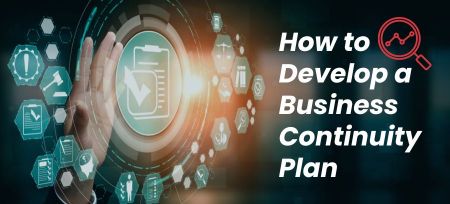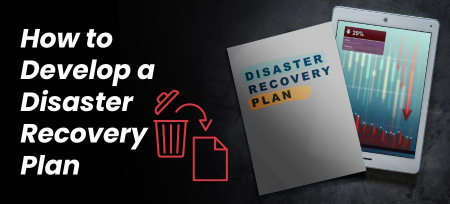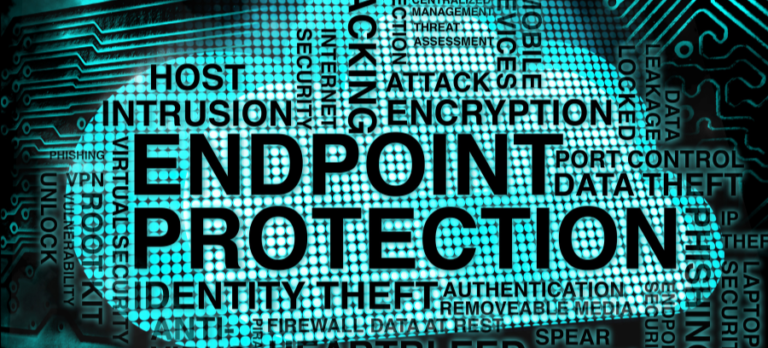You are running a successful business, and everything is going smoothly, but suddenly, disaster strikes. It could be a natural calamity like a flood or an earthquake or maybe a cyber attack that cripples your company’s computer systems. Whatever the cause, the result is the same, your business is left scrambling to pick up the pieces and get back on its feet.
It’s a scary thought, isn’t it? But here’s the thing, it doesn’t have to be. That’s where Business Continuity and Disaster Recovery (BCDR) comes into play. BCDR is a game plan that helps your business bounce back from any curve balls thrown. It’s a series of strategies and procedures designed to keep your essential operations running, even in a major disruption.
Whether it’s a natural disaster, a cyber attack, or any other unexpected event, BCDR ensures that your business can handle the storm and come out on the other side intact.
In this comprehensive BCDR guide, we will explain BCDR, why it’s important to organizations, and how to create a BCDR plan.
What is BCDR?
BCDR stands for business continuity and disaster recovery, a plan that helps businesses keep running smoothly when something unexpected happens, like a natural disaster or a cyber attack. The main goal of BCDR is to ensure that important business tasks can still be completed and that sensitive information is protected, even when things go wrong.
BCDR involves creating a set of steps and strategies that businesses can follow to prepare for, deal with, and bounce back from disruptions. By having a BCDR plan in place, companies can reduce the negative effects of these disruptions on their operations, data, and overall ability to function.
Essentially, BCDR is like an insurance policy for businesses. It helps businesses keep going and serving their customers, even in the face of challenges. Without a solid BCDR plan, businesses risk losing money, data, and the trust of their customers when something unexpected happens. That’s why BCDR is such an important part of managing risk and ensuring the long-term success of any organization.
Why is it important to have a business continuity and disaster recovery (BCDR) plan?
Having a BCDR plan is essential for any business, no matter how big or small it is or what kind of work it does. When things go wrong, they can cause a lot of trouble for a company, even if they don’t seem like a big deal at first. These disruptions can get in the way of day-to-day work, hurt the company’s image, and cost a lot of money. Without a plan, these problems can quickly get out of hand.
One of the biggest threats businesses face today is ransomware attacks. These attacks are happening more and more often, targeting a new organization every 11 seconds. It’s not a question of if a company will be attacked, but when. If a business doesn’t have a good BCDR plan, it’s at a much higher risk of falling victim to ransomware. This can lead to major disruptions, the loss of important data, and serious damage to the company’s finances and reputation.
This is where a well-designed BCDR plan comes in. By creating and implementing this plan, businesses can reduce the impact of disruptions and protect what matters most to them. This means keeping sensitive data safe and ensuring the company can still serve its customers and partners, even when things get tough.
What is the difference between Disaster Recovery and Business Continuity?
Disaster recovery and business continuity are two important things that help keep a business running, but they’re not the same.
Disaster recovery is about getting things back to normal after a major disruption, like a natural disaster, a cyber-attack, or a big equipment failure. The main goal is to fix the technology and systems that were damaged or lost so the business can start operating again as quickly as possible. This might involve restoring lost data, replacing broken hardware, or getting systems back online.
Business continuity, on the other hand, is about keeping the most critical parts of the business functioning, even in the face of a disruption. It’s a broader concept that goes beyond just fixing technology. Business continuity plans look at all the things a business needs to keep running, like people, processes, and resources. The idea is to have backup plans and workarounds in place so that the most important work can still get done, even if there are problems.
Both are important for ensuring a business can handle trouble and keep going. Disaster recovery gets things back to normal, while business continuity keeps the business running as best it can until everything is fixed.
How to Develop a Business Continuity Plan

Identify What's Important
First, figure out which parts of your business are most critical. What are the key products, services, or processes that you can’t afford to lose? Make a list of these essential elements and prioritize them.
Assess the Risks
Next, think about all the things that could disrupt your business, like natural disasters, cyber-attacks, or equipment failures. Consider how likely each of these risks is and how much damage they could cause.
Make a Plan
Now, it’s time to create a step-by-step plan for responding to disruptions. For each critical part of your business, develop backup plans and workarounds. Assign specific roles and responsibilities to your team members.
Protect Your Data
Make sure to include a plan for backing up and protecting your important data. Regularly save copies of your data in a secure, off-site location so you can access it even if your main systems go down.
Test and Update
Once you have a plan, test it out to make sure it works. Run through different scenarios and see how your team responds. Based on what you learn, update and improve your plan over time.
Train Your Team
Finally, make sure everyone in your business knows about the plan and their role in it. Provide training and resources, so your team is ready to jump into action when needed.
How to Develop a Disaster Recovery Plan

Know Your Systems
Start by listing all the technology and systems your business relies on, like computers, servers, phones, and software. Figure out which ones are most important to keep your business running.
Identify Risks
Think about all the things that could go wrong, like natural disasters, cyber-attacks, or hardware failures. Consider how likely each risk is and how much trouble it could cause.
Set Recovery Goals
Decide how quickly you need to get each system back up and running after a problem. Prioritize the most critical systems that your business can’t function without.
Choose Your Backup Methods
Figure out the best way to backup your data and systems. This could include using cloud storage, external hard drives, or off-site servers. Make sure to backup regularly.
Create a Step-by-Step Plan
Write out a clear plan for what to do when disaster strikes. Include steps for assessing the damage, restoring backups, and getting systems back online. Assign specific tasks to team members.
Test and Refine
Regularly test your plan to make sure it works. Run through different disaster scenarios and see how your team responds. Use what you learn to improve your plan over time.
Final Words
In a world where businesses face an ever-increasing array of threats and challenges, having a solid Business Continuity and Disaster Recovery (BCDR) plan is no longer an option – it’s an absolute must. As organizations navigate the complex and constantly evolving landscape of today’s business environment, they must be prepared for anything coming their way.
By investing time and resources into developing and implementing effective BCDR strategies, companies can create a strong line of defense against the potentially devastating consequences of unexpected disruptions.
It doesn’t matter if it’s a natural disaster, like a hurricane or earthquake, a cyber attack that cripples their systems, or any other type of disruption – having a well-crafted BCDR plan in place can make all the difference.
Contact us now for more information on the Business Continuity and Disaster Recovery (BCDR) plan!





